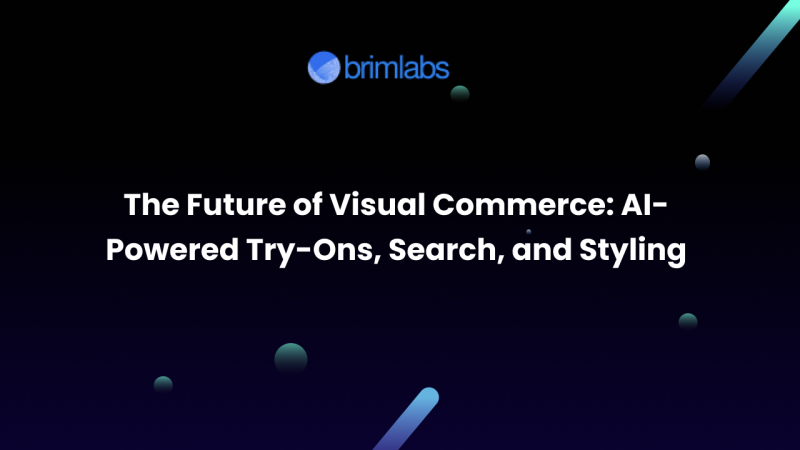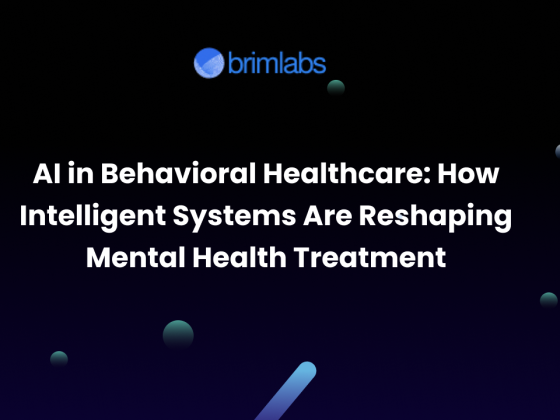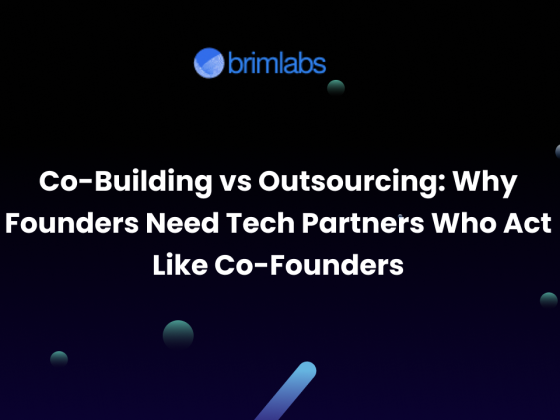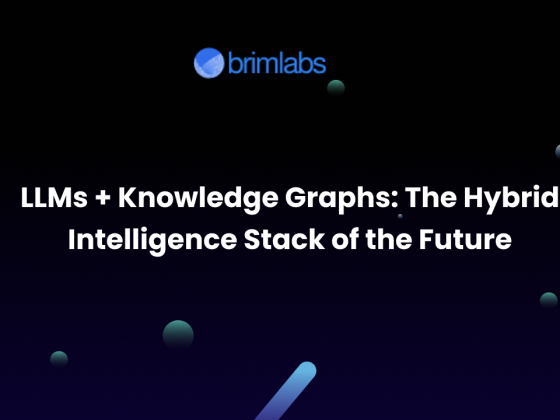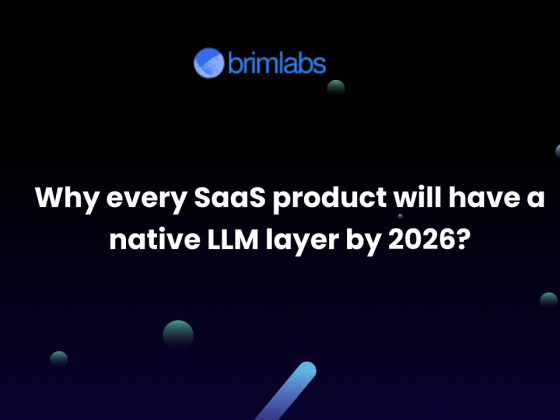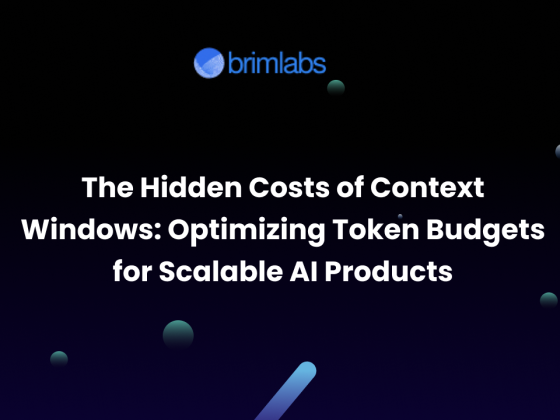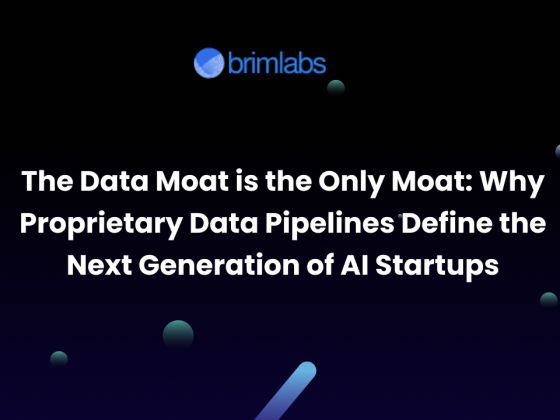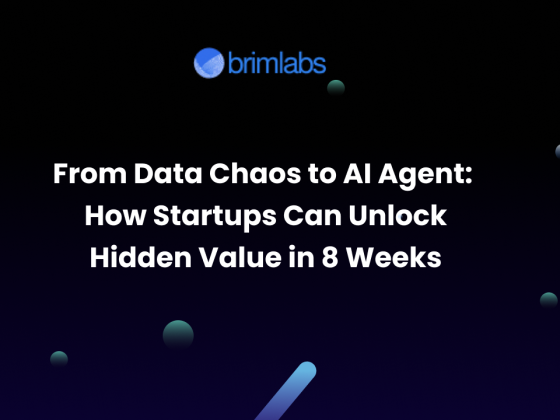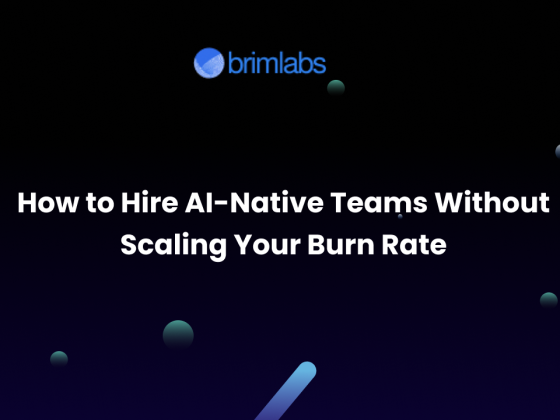Visual commerce is moving from nice to have to mission-critical. Over the next few years, shoppers will expect to see how products look on them, in their rooms, and within their existing wardrobes before they click Buy. They will expect a camera-based search that understands shape, color, texture, brand cues, and even mood. They will expect on-demand styling that speaks their personal language and respects their preferences across channels. The retailers that deliver this visual confidence will win more sessions, larger carts, and far fewer returns.
In this deep dive, we explore where visual commerce is heading and how to build a practical roadmap that blends AI-powered try-ons, visual search, and personal styling into one outcome-driven stack. Along the way, we reference fresh data points and live experiments from leaders like Google, Pinterest, Amazon, and Zalando to ground the strategy in reality.
Why visual commerce is exploding now
Three forces are converging.
- Camera native behavior is finally the norm. Google reports massive usage for Lens and describes a world where people search what they see. Think with Google highlights that more than 1.5 billion people use Lens each month and that visual searches have grown by more than 60% year over year. This is not a fringe workflow anymore. It is a daily behavior.
- Merchants see measurable lift from augmented reality and three-dimensional content. Shopify and independent analyses repeatedly show conversion gains and return rate reductions when shoppers can visualize products in context. Recent syntheses report conversion rate uplifts as high as 94% for products that include three-dimensional and AR views, and return reductions in high consideration categories like furniture.
- The underlying markets are scaling at venture-grade speeds. Multiple forecasts place the virtual try-on market growing above 25% compound annually through 2030, expanding from a high single-digit or low double-digit billion-dollar base to multi-tens of billions. This is not just a marketing gimmick spend. It is a serious software and data platform category.
These tailwinds make the next five years the adoption window for visual commerce done right.
Pillar one: AI-powered try-ons that build confidence and cut returns
Try on technology has progressed from two-dimensional overlays to photorealistic, physical-aware, and body-aware rendering. The best systems are fast, forgiving, and fun. They quietly handle occlusion, body pose, lighting variations, and material properties. They also respect privacy while learning from anonymized body and fit feedback.
Where try-ons already prove business value
- Fashion and footwear: Amazon has invested in virtual try-on for shoes and eyewear at scale. Third-party reports and case studies attribute conversion lifts and engagement gains to these features as shoppers play with variations in colorways and frames without leaving the product page.
- Beauty and eyewear: Face-anchored try-ons continue to shine because facial landmark detection is mature and phones are excellent at front camera tasks. Fast feedback loops create an addictive explore experience that often ends in a confident purchase.
- Home and furniture: Room scale placement with true-to-scale three-dimensional models reduces the imagination gap. The effect is strongest on large items that usually drive high return costs. Independent roundups cite return reductions up to 40% for furniture when AR visualization is present.
- Strategic shift away from ship to try: Amazon ended its physical try-before-you-buy program and pointed directly to AI features such as virtual try-on and improved size recommendations as better ways to guide customers. The message is clear. Digital try-ons are moving from novelty to the default path to confidence.
What the next wave of try-ons will include
- Body aware sizing with live telemetry. Expect more cameras to estimate body measurements on the device and map them to brand-specific fit curves, then combine that with return history to offer a single confident size recommendation. Zalando has discussed the role of AR try on layered on top of recommendations and size flags as it leans into emotional commerce.
- Material realism with generative rendering. Fine-grained cloth simulation, sheen, and drape will feel believable under different lighting scenarios without heavy precomputation. Generative models trained on studio assets will fill gaps where meshes and textures are missing.
- Cross-brand outfit try-on. Instead of trying one shirt in isolation, shoppers will virtually dress in full looks that span brands and price points. This is a styling and discovery unlock as much as a try-on feature.
- Glasses that see. Smart eyewear is not yet mass market, but reports suggest the category is evolving. As hardware matures, fashion and beauty try-ons will reach beyond the phone. Retailers should watch this space without over-indexing until hardware adoption crosses a clear threshold.
Practical build choices for try-ons
- Start with the highest return pain. For apparel brands, begin with categories that drive the largest return costs or the most fit uncertainty. For beauty, start with shade selection pain points.
- Prioritize speed to first render. Every second of delay kills exploration. Prewarm models, cache common meshes and textures, and load progressively. Measure time to first believable render as a product KPI.
- Support low-friction input. Let shoppers try without a login where privacy rules permit. Offer one tap background capture with on-device processing to minimize risk and speed the loop.
- Close the learning loop. Ask for simple fit feedback after delivery. Even a single bit from a significant number of orders can improve future try-on accuracy.
Pillar two: Visual search that turns a camera into the new search box
Visual search is the backbone of discovery in a world where shoppers are inspired by a look, an aesthetic, or an object in the wild. The camera becomes intent. The model recognizes, categorizes, and suggests.
What the data shows
- The visual search scale is real. People use Google Lens at a massive scale monthly, and Google has publicly described a steady acceleration in visual search volume. That is a clear signal to build for this modality.
- Shoppers prefer visual discovery in feed environments. Pinterest reports that a large share of users now begin their searches on the platform, and in a recent independent study from Adobe, nearly three-quarters of respondents said Pinterest visual search results outperform traditional results. That suggests discovery-led shopping journeys thrive on visual platforms.
- Visual discovery converts. Industry roundups show that shoppers are far more likely to buy after engaging with rich visual content and that Pinterest video pins boost purchase propensity. While these are platform studies, the direction aligns with merchant-observed behavior.
The next evolution of visual search
- Multimodal queries that combine image and text. A shopper snaps a photo of a linen blazer and types summer wedding. The system infers season, fabric weight, color palettes, and appropriate formality, then returns options with try-on ready assets and size confidence.
- Attribute disentanglement at scale. Modern models learn separate notions of color, fit, silhouette, and visual texture. This allows intent-preserving substitutions when inventory is limited. Think this cut plus this shade plus vegan material.
- Live camera overlays for in-store guidance. Visual search will increasingly fuse offline and online by letting phones identify in-aisle items and surface reviews, try on options, and bundle suggestions.
Practical build choices for visual search
- Start with known hard attributes. Train and evaluate on what customers actually filter for. Silhouette, inseam, heel height, temple width, fabric opacity, and shade undertone are popular because they map to human decisions.
- Treat your catalog as a living dataset. Every return reason, review snippet, and chat transcript can become a labeled attribute if you run it through human-in-the-loop pipelines. These labels make visual search smarter.
- Always provide lookalikes. If an exact match is out of stock, return similar cuts and palettes first. For fashion, cut and drape are stronger predictors of satisfaction than brand match.
- Optimize for camera in and tap out. The moment of recognition must feel instant, and the next step should be clear. Deep link to the product with try on preloaded, not to a generic grid.
Pillar three: AI styling that mixes inspiration with personal rules
Personal styling is the layer that turns visual search and try-ons into full outfits and rooms. The best styling systems blend human taste, brand identity, and machine learned patterns. They respect constraints such as climate, dress codes, cultural norms, and budgets without turning into sterile rule engines.
Case studies and signals
- Zalando has shipped an AI assistant that offers conversational fashion advice across many markets. It sits inside the app experience and is being upgraded regularly to be more personal and useful. This shows that styling as conversation is viable at scale and worth iterating.
- Recommendation engines are enjoying a fresh wave of innovation powered by multimodal AI. Forecasts anticipate fast growth as deep learning and privacy-preserving techniques enable more accurate and less creepy personalization.
- Personalization pays. Studies in 2025 point to meaningful improvements in marketing return on investment and conversion rates for brands that adopt AI-driven personalization end-to-end. Styling is a key surface where that value shows up.
What next-gen styling will feel like
- Wardrobe aware: Shoppers will upload or sync recent purchases so that the assistant can propose pairings that maximize cost per wear and reduce redundant buys.
- Occasion aware: The prompt will be a real-life context. Think three days offsite in a coastal city with two business casual dinners and a morning run. The assistant will assemble looks that travel well, layer, and fit the weather.
- Creator and community infused: Social content will stream into styling suggestions so that shoppers can adopt trends without losing their identity. Two-way feedback will teach the system which creators map to each shopper.
- Sustainability transparent: Styling engines will expose care, longevity, and resale value to encourage smarter consumption.
Practical build choices for styling
- Ground styling in the same attributes that power search. When the assistant says this dress works with your shoes because the silhouette and undertone align, the shopper learns to trust the system.
- Build a style profile that the shopper can actually edit. Let them set absolute yes and no rules and hard constraints like preferred inseam, sleeve length, and fabric sensitivities.
- Start with a human-style seed set per brand. Then let the model generalize. This keeps brand voice intact and avoids uncanny suggestions.
- Measure confidence and delight, not just click through. Track saved looks, repeat usage, and time to add to cart. Styling is about the relationship, not only a single conversion.
Architecture for visual commerce that works in the real world
A single shopping flow can combine all three pillars smoothly. Here is a sample reference architecture.
- Capture: User opens the camera from the home screen. They snap a photo of a look they love or a piece of furniture in a hotel room.
- Understand: A multimodal model parses the image into attributes and intent. It also analyzes context signals such as location, weather, and session history.
- Retrieve: The system queries a vector-indexed catalog enriched with attributes, reviews, and returns. Results include try-on-ready assets and three-dimensional models where available.
- Compose: A styling agent composes a small set of outfits or room scenes that respect the user profile and budget. It adds optional alternates for each item.
- Visualize: The shopper taps into an instant try-on or room placement. For apparel, size recommendations appear inline. For furniture, scale and fit are shown true to life.
- Decide and learn: The shopper saves or buys. Post delivery, the system asks for quick feedback to improve future fits. The catalog updates attribute labels, and the styling agent learns from that outcome.
Data foundations that make this work
- A living product knowledge graph. Treat every SKU as a data object with dozens of attributes that can be machine labeled and human corrected. Keep measurements and materials precise.
- A privacy-first user profile. Store preferences and past outcomes with clear controls. Allow shoppers to export, purge, and pause.
- A content pipeline for assets. Three-dimensional models, neutral background imagery, and high-resolution textures should be versioned like code. Automate background removal, relighting, and file optimization.
- A human in the loop layer. Product teams and merchandisers should be able to correct attributes, prune poor model suggestions, and seed styling ideas without engineering support.
Metrics that matter for visual commerce
The temptation is to celebrate fun engagement graphs. Resist that. Focus on customer and business outcomes.
- Conversion rate on sessions that engage with AR or try on versus baseline. Independent syntheses point to major uplifts when AR and three-dimensional content are present. Measure the delta at your brand level.
- Return rate reduction by category. Track size and fit-related returns before and after deployment. The furniture and footwear categories often show the clearest improvements.
- Time to first believable render. This is the primary speed metric for try on. Under two seconds should be the goal for mid-range phones on mobile networks.
- Visual search success rate. Measure whether the first page contains at least one relevant item as judged by later clicks or purchases.
- Styling saves to buy rate within seven days. Styling is about building intent. Watch how often saved looks lead to carts.
- Assisted discovery share. Count how many orders started with camera input or image-driven search rather than a text query.
Organizational changes to ship this well
Visual commerce programs cut across merchandising, creative, product, data, and engineering. The highest performing teams adopt a mini studio model inside the e-commerce group.
- Dedicated product manager for visual experiences. This leader owns the combined journey from camera to styling to try on. They partner directly with merchandising and creative.
- Mixed pod with data scientists, computer vision engineers, and front-end specialists. Treat the pod like a feature team with its own backlog and success metrics.
- Creative operations retooled for machine assets. The studio produces assets designed for model training and three-dimensional workflows, not only hero imagery.
- Privacy and compliance are embedded from day one. On-device processing and opt-in policies are standard. A privacy review is part of every feature launch.
Important constraints and risks
Visual commerce is powerful, but it can backfire if rushed.
- Overpromising realism: If the try-on consistently misrepresents fit or color, return rates can actually rise, and trust will fall. Start narrow and expand once accuracy is proven.
- Latency on mid-tier devices: Test on the phones your customers actually use, not just flagships. Keep models small and optimize shaders for WebGL or Metal as needed.
- Dataset bias: If your sizing data skews to a narrow body type, recommendations will be unfair. Set explicit coverage goals and run fairness checks.
- Accessibility: Provide equivalent experiences for users who cannot or do not want to use a camera. Offer rich imagery, clear size charts, and text-based styling.
- Hype cycles in hardware: Headsets and smart glasses will change the game over time, but current adoption is uneven and shipments dipped in 2025, according to IDC reporting surfaced in the press. Build optionality into your roadmap rather than hard dependencies on hardware that might slip.
The competitive landscape and where to watch
- Search platforms: Google continues to push multimodal search, which raises customer expectations for all brands. Stay close to Lens product updates because they often predict mainstream behavior.
- Visual discovery platforms: Pinterest is leaning into visual search and discovery for first shopping journeys. Retailers with high design surface area should invest in native visual content and product feed accuracy for these channels.
- Marketplaces: Amazon is consolidating paths to confidence with virtual try-ons and algorithmic fit tools while trimming older programs that were complex to operate at scale. Expect more AI native features to replace logistics-heavy trials.
- Fashion specialists: Zalando is a leader in blending AI assistance with emotional commerce and is public about its investments in AI-generated imagery and personalization. Watch how these changes affect time to market for creative and the mix between human and machine content.
Roadmap for a brand that wants to lead in visual commerce
A practical plan over four quarters.
Quarter one: foundations and a single hero use case
- Audit product data. Add the five to ten attributes per category that most affect purchase decisions.
- Build the try-on or placement experience for one hero category. For fashion, pick a single garment type. For home, pick a top-selling furniture series. Measure speed and accuracy.
- Ship a minimal visual search beta for that same category. Limit it to a short list of attributes you can confidently recognize.
- Train a lightweight styling model that uses human-seeded looks for that category. Focus on clarity, not surprise.
Quarter two: catalog scale and closed loop learning
- Expand attributes and convert more SKUs to three-dimensional or try-on ready assets.
- Begin post-purchase feedback capture focused on size and fit confidence.
- Add lookalike and substitute logic to the search and styling stack.
- Set up an internal editorial program that blends human taste with model suggestions to scale styled looks.
Quarter three: cross-category experience and performance
- Add a second category and introduce cross-category styling.
- Optimize mobile performance and reduce time to first believable render for mid-range devices.
- Integrate content from creators and the community while retaining brand voice.
- Launch an in-store camera mode that recognizes products and deep links into try-on and styling.
Quarter four: personalization and new surfaces
- Allow shoppers to build and edit a personal profile that captures preferences, sizes, and rules.
- Personalize search, styling, and recommendations end-to-end.
- Explore new surfaces like live commerce and shoppable video with instant try-on.
- Prepare for hardware experiments without committing the core experience to any single device class.
What will success feel like for the shopper?
- Discovery feels intuitive: The shopper starts with an image or a vibe and gets to a tight set of options quickly.
- Confidence replaces guesswork: Size suggestions make sense, and try-ons look like reality.
- Style feels personal: The assistant remembers what the shopper likes and speaks in their tone without being pushy.
- Returns drop because the shopper buys what fits their life.
What success will feel like for the business?
- Higher conversion and larger average order value where visual content is present. Multiple studies point to strong lifts here when three-dimensional and AR assets exist. Your telemetry should confirm it for your categories.
- Lower return costs in categories that adopt size and fit aware try-ons. Track the change with clear baselines.
- Faster creative production. Generative tools reduce the cycle time from concept to product imagery, as fashion leaders have shared publicly.
- Better marketing efficiency from personalization. Expect higher campaign ROI once search, styling, and recommendations are aligned.
Final thoughts
Visual commerce is not a single feature. It is the new shopping operating system. Camera input unlocks intent. AI-powered search and styling translate that intent into the right products. Try-ons close the confidence loop and cut costly returns. The winning brands will not chase every trend. They will pick a hero use case, build reliable speed, measure outcomes that matter, and then scale with taste.
If you are planning your next step, start with the categories where the imagination gap hurts the most. Add attributes that map to real decisions. Ship try-ons that render quickly and honestly. Layer in visual search that respects the way people actually shop. Then bring it all together with styling that feels more like a trusted friend than a sales script.
The future of visual commerce will reward teams that combine rigorous engineering with empathy for how people see, choose, and wear or place the things they love. The tools are finally ready. The audience is already searching with their cameras. Now it is your turn to deliver the most confident shopping experience your brand has ever offered.
At Brim Labs, we partner with brands and retailers to build these AI-powered experiences end to end. From developing photorealistic try-on systems to enabling multimodal search and personal styling assistants, we help businesses turn visual commerce into measurable growth.

